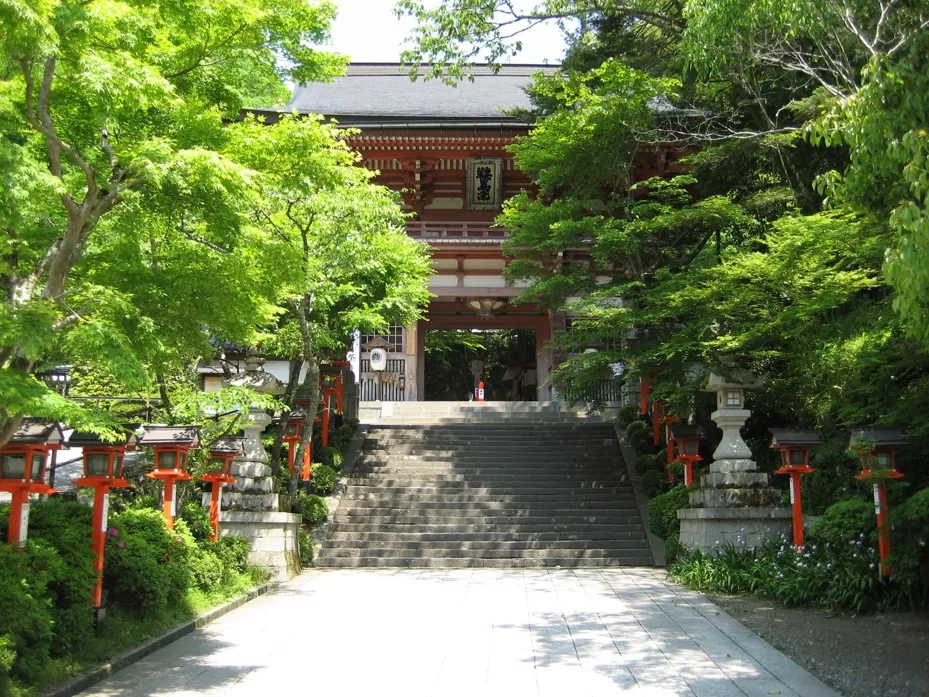Takekiri Eshiki: A Thousand Year Old Ritual at Kurama-dera Temple
The annual bamboo-cutting ritual, locally known as Takekiri Eshiki, held in Kyoto’s Kurama-dera Temple harks back to a time well over 1,000 years ago. An armor-clad group of monks faithfully reenact an ancient legend of a warrior monk who defeated a mythical snake, marking it as one of the oldest traditions in Kyoto.
Legend Behind the Takekiri Eshiki
The ritual originates from the story of Buen Shonin, a monk from the early Heian Period. According to the legend, Buen was training on Mt. Kurama when he encountered a massive snake. Using Buddhism’s power, he overcame the snake, symbolizing triumph over evil.
During Takekiri Eshiki, this legendary encounter springs to life. Bamboo stalks, 4-meter-long and 10-centimeter-thick, stand in for the snake defeated by Buen Shonin. Monks split into teams representing different prefectures and compete in slicing through these bamboo poles in minimum time.
Significance and Sequence of the Ritual
But Takekiri Eshiki is not just about recreating a legend; it holds spiritual significance for its participants and spectators alike. The event expresses appreciation for water and acts as a prayer meant to exorcise evil and promote truth—making it an exciting ritual full of spiritual sentiment. It’s considered as one of the most exciting Kyoto events in June.
The ritual commences with children performing dances in front of the main shrine building—an experience guaranteed to captivate audiences. Following this captivating performance, monks take center stage for the bamboo-cutting ceremony. The monks belong either to Omi or Tamba of Kyoto and Hyogo Prefectures. The speedy contest concludes with victorious monks running towards the head temple while resonating victory cries. This portion of the spectacle crowns winners with the title shoubu-giri.
It is believed that whichever region wins—Omi or Tamba—will be blessed with abundant crops for that year.

More About Kurama-Dera Temple
Given its history tracing back to 770 when founded by a Chinese monk, Kurama-dera is not just any ordinary temple. Nestled amidst ancient forests on Mt. Kurama’s slopes, it offers breathtaking natural beauty around every corner and deeply values its relationship with nature.
It’s no wonder then that many yearly rituals at Kurama-dera are nature-centered. For example, their annual celebration on June 20th – Takekiri-eshiki – pays homage to elements of nature while also predicting crop futures in surrounding areas.
The temple derives its name – Kurama-dera, meaning Horse-saddle temple – from another legend involving two figures guided there on horseback; namely Monk Gantei, who originally founded it as a small sanctuary on thr mountain dedicated to Bishamonten; And later Isendo Fujiwara, who intended to build a temple for Thousand-armed Kannon Bodhisattva.
Parting Gifts from Takekiri Eshiki
Another interesting aspect of the bamboo-cutting ritual is what happens to the cut pieces afterwards. Local belief holds that these shards guard homes against misfortune, making them coveted tokens post-ceremony. Beyond that, roots intact female bamboo is returned and replanted in the grove where male trees were taken from—signaling respect towards nature even within this intense ritual.
So whether you are drawn towards ancient legends and traditions or simply wish to explore Kyoto’s culture at its fullest – visiting Kurama-Dera Temple during Takekiri Eshiki should definitely make it onto your itinerary.
By the way, if you are in Kyoto during June, visit the Green-Leaf Festival at Chishaku-in Temple, also known as Aoba Matsuri. This annual celebration, held on June 15, is a vibrant and enchanting event that brings the temple grounds to life.